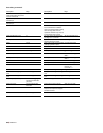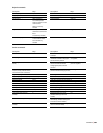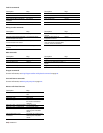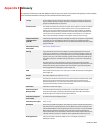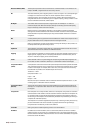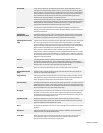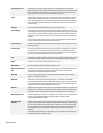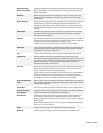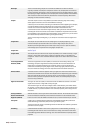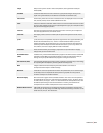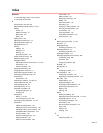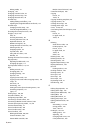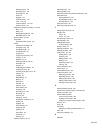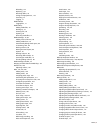
Resample
Sample
Sample Rate
Sample Size
Sample Value
Secure Digital Music
Initiative (SDMI)
Shortcut Menu
Signal-to-Noise Ratio
Society of Motion
Picture and Television
Engineers (SMPTE)
Soft Synth
Streaming
The act of recalculating samples in a sound file at a different rate than the file was
originally recorded. If a sample is resampled at a lower rate, sample points are removed
from the sound file, decreasing its size, but also decreasing its available frequency range.
Resampling to a higher sample rate, extra sample points are interpolated in the sound file.
This increases the size of the sound file, but does not increase the quality. When down-
sampling, one must be aware of aliasing.
The word sample is used in many different (and often confusing) ways when talking
about digital sound. Here are some of the different meanings:
A discrete point in time which a sound signal is divided into when digitizing. For example,
an audio CD-ROM contains 44,100 samples per second. Each sample is really only a
number that contains the amplitude value of a waveform measured over time.
A sound that has been recorded in a digital format; used by musicians who make short
recordings of musical instruments to be used for composition and performance of music
or sound effects. These recordings are called samples. In this manual, we try to use sound
file instead of sample whenever referring to a digital recording.
The act of recording sound digitally, i.e., to sample an instrument means to digitize and
store it.
The sample rate (also referred to as the sampling rate or sampling frequency) is the
number of samples per second used to store a sound. High sample rates, such as
44,100 Hz provide higher fidelity than lower sample rates, such as 11,025 Hz. However,
more storage space is required when using higher sample rates.
See
Bit Depth.
The sample value (also referred to as sample amplitude) is the number stored by a single
sample. In 16-bit audio, these values range from -32768 to 32767. In 8-bit audio, they
range from -128 to 127. The maximum allowed sample value is often referred to as 100%
or 0 dB.
The Secure Digital Music Initiative (SDMI) is a consortium of recording industry and
technology companies organized to develop standards for the secure distribution of
digital music. The SDMI specification was created to answer consumer demand for
convenient accessibility to quality digital music, enable copyright protection for artists'
work, and enable technology and music companies to build successful businesses.
A context-sensitive menu that appears when you right-click certain areas of the screen.
The functions available in the shortcut menu depend on the object being right-clicked as
well as the state of the program. As with any menu, you can choose an item from the
shortcut menu to perform an operation. Shortcut menus are used frequently for quick
access to many commands.
The signal-to-noise ratio (SNR) is a measurement of the difference between a recorded
signal and noise levels. A high SNR is always the goal.
The maximum signal-to-noise ratio of digital audio is determined by the number of bits
per sample. In 16-bit audio, the signal to noise ratio is 96 dB, while in 8-bit audio the ratio
is 48 dB. However, in practice this SNR is never achieved, especially when using low-end
electronics.
SMPTE timecode is used to synchronize time between devices. The timecode is formatted
as hours:minutes:second:frames, where frames are fractions of a second based on the
frame rate. Frame rates for SMPTE timecode are 24, 25, 29.97 and 30 frames per second.
A soft synth is a software-based synthesizer. Downloadable Sounds (DLS) and Virtual
Studio Technology Instruments (VSTi) are two types of soft synths.
You add a soft synth control in the Mixing Console window for each software synthesizer
you want to use in a project.
A method of data transfer in which a file is played while it is downloading. Streaming
technologies allow Internet users to receive data as a steady, continuous stream after a
brief buffering period. Without streaming, users must download files completely before
playback.
316 | APPENDIX E



